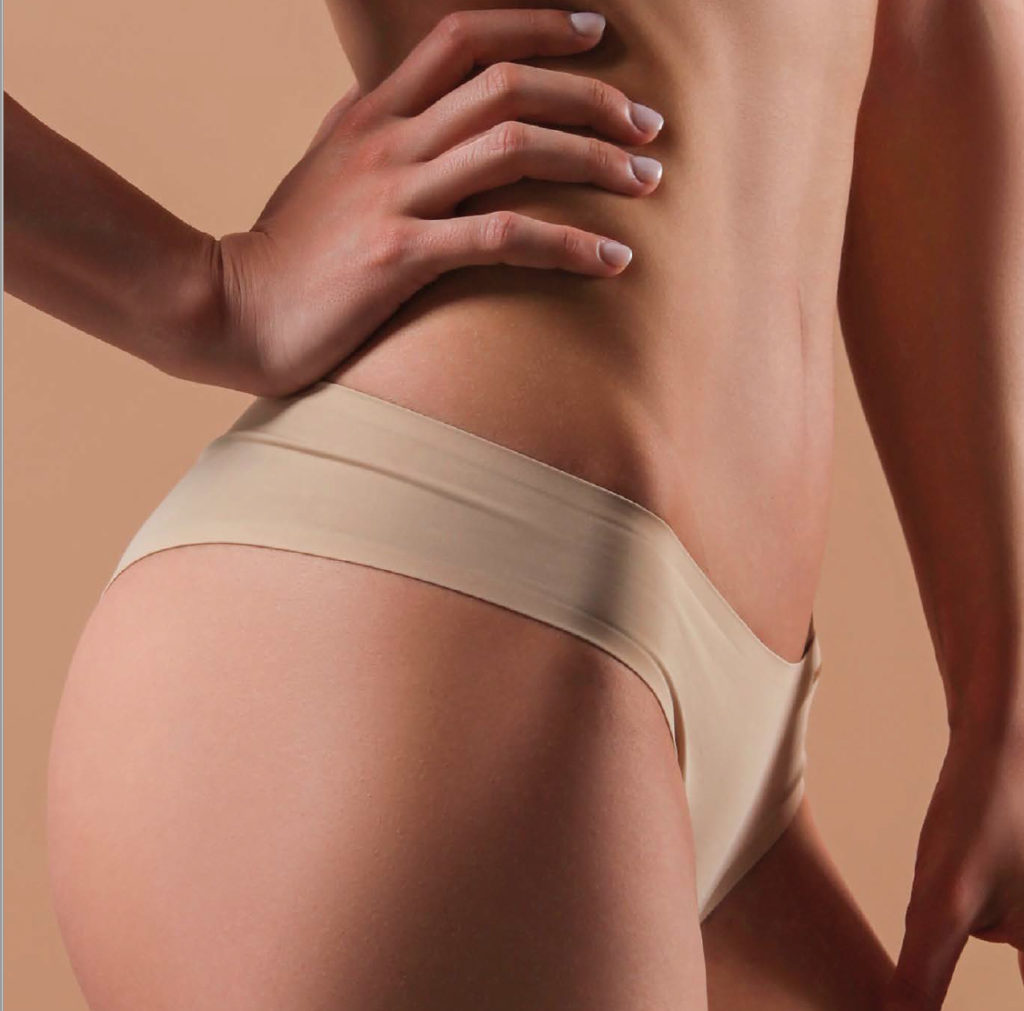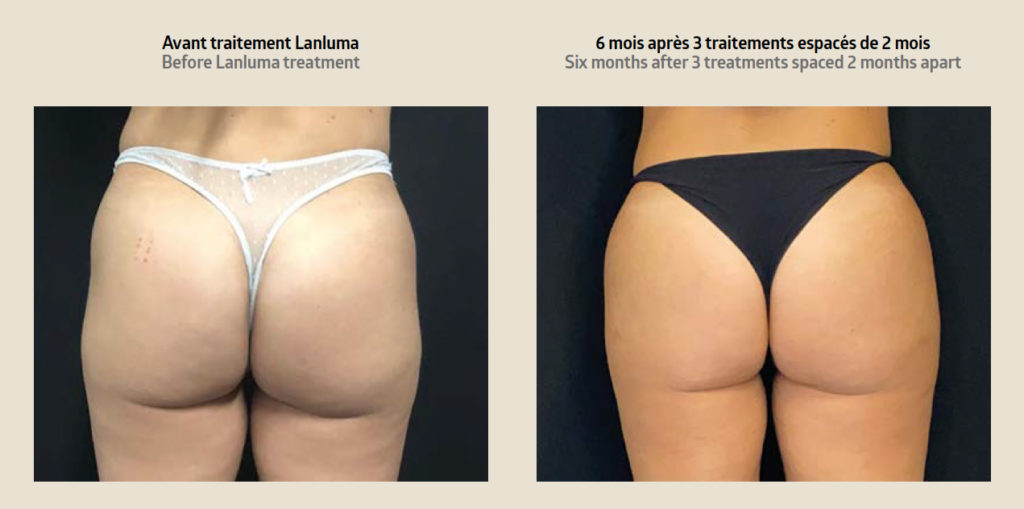Dr Francesca de Angelis
The medical aesthetics arsenal was missing a filler product to reshape the body. It needed to be available in suffi cient quantities to fill certain areas of the body, it needed to be safe, and it needed to offer natural results, both in appearance and to the touch. Already popular with patients in Italy, this new non-surgical approach to boost volumes has now arrived in France.
 A bio-stimulating filler product Lanluma (Sinclair Pharma) was formulated to fill and boost volume in the face and body.
A bio-stimulating filler product Lanluma (Sinclair Pharma) was formulated to fill and boost volume in the face and body.
So far, the areas where I have most used it are the buttocks, the neck and the face. It can also be used to fill and restructure the hands and the decolletage, which I think is wonderful, as well as the arms, thighs and calves. This product is safe and lasts well over time because it is made up of poly-L-Lactic acid (PLLA) microparticles which stimulate the body’s natural collagen production.
By stimulating collagen production, Lanluma gradually increases the volumes and corrects skin depressions as the protocol progresses. Between 2 and 4 sessions are generally needed, spaced two months apart. The product breaks down slowly, and the results last up to two years on average. It is presented as a powder in a 630mg bottle suitable for areas such as the buttocks (or in a 210mg bottle for correcting the face and neck) to which we add 40ml of WFI. You must then shake it for 10 minutes and wait an hour before use. The product can be used in the 72 hours after being mixed.
 The renaissance of the buttocks
The renaissance of the buttocks
Many women lose the shape of their buttocks after pregnancy, diet or the menopause. They find themselves with concave, square or flat buttocks, as the fatty volume in the top and sides has disappeared. To make them rounder and plumper, I inject 1 bottle per side to fi ll the lateral hollows in the first session, using a cannula as it is safer and more comfortable for the patient. The effects of the collagen development appear after 2 months, which is when we schedule the second session. Here, we continue to volumise these areas, which also prolongs the product’s effects. We have noticed that the results last 12 months for 2 sessions, and 24 months after the 3rd session, so the usual protocol is for 3 treatments spaced two months apart and one top-up session per year. For a surgeon, Lanluma is a useful product because women are looking for a similar result to that achieved with lipofilling but without running the risk of an embolism. It is also good for women who do not have enough fat. With Lanluma, we can decide what size and shape we want to achieve, and in just a few sessions, with a very natural-looking fi nal appearance and texture.
Other areas of the body and face In the face, the results are similar to nappage with autolo-gous fat, as though the patient had undergone a full-face treatment, in 2 to 3 sessions maximum and with just one 210mg bottle used per session, with the product being injected using a cannula. It can also be used for localised reshaping, for example to project and add volume to the chin, to fill skeletal temples, or to add volume to the cheekbones or cheeks. Neck and hand treatments are also popular, and the results look very natural on these fragile and difficult-to-treat areas. The hands are smoother, the skin is denser, and the creases disappear, though without the “padded” effect that we sometimes get with hydrophilic fillers. On the neck, any horizontal lines are filled, and any creases are smoothed. On the decolletage, the skin is plumped, the deep wrinkles in the hollow of the breasts are erased, as are any fi ne lines. The leathery appearance disappears, and the skin is densifi ed thanks to the firming effect generated in the tissues. The final appearance gives a real boost of youthfulness and the results are stable for two years. They are not affected by weight-loss diets, unlike lipofilling. Lanluma also improves the skin quality and elasticity. What patients really like is the gradual onset of the results, which means they do not have to tell anyone about having the treatment.
 Dr Francesca de Angelis: Plastic surgeon Graduated in plastic surgery from the Federico Secundo faculty of medicine, Naples (Italy) Former house doctor at Naples hospital and the university of Sophia Antipolis.
Dr Francesca de Angelis: Plastic surgeon Graduated in plastic surgery from the Federico Secundo faculty of medicine, Naples (Italy) Former house doctor at Naples hospital and the university of Sophia Antipolis.
More information: dea-center.com












